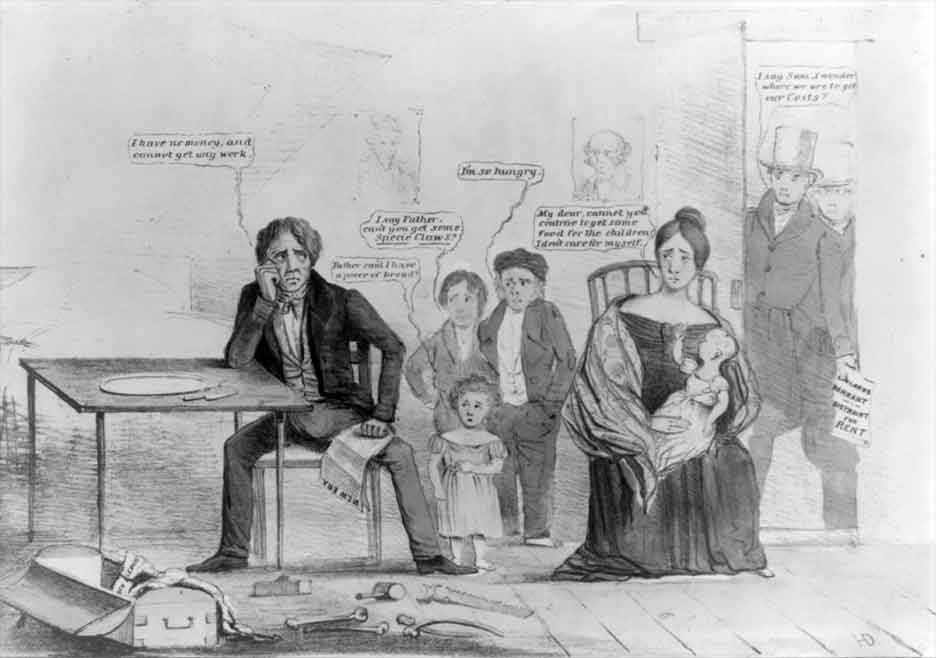Financial Crashes in Antebellum America

Grain Reaper in the Fields
The growth of the United States economy in the years following the War of 1812, propelled by the abundance of western lands and the increase in export prices for cotton, helped foster a climate of expansionism and real estate speculation. In 1818, Langdon Cheves, the new head of the Second Bank of the United States, began restricting credit to place the American economy on more secure footing. By 1819, in addition to the economically depressive effects of the Bank's contractionary policies, Americans faced decreased European demand for American exports and a drop in the international price of cotton. Soon, the prices of cotton and wheat had fallen by half, leading to a collapse of the market. This was disastrous for the largely agricultural American economy, and the nation fell into a depression. The South, West and Mid-Atlantic States were most seriously affected. It took about four years for the economy to emerge from the depression. Stability and prosperity returned by 1823; and Second Bank of the United States, under Nicholas Biddle, formulated policies aimed at promoting economic expansion.
In the early 1830s, the economy experienced another period of rapid expansion. Many Americans speculated in western real estate, to an even greater degree than had occured previously. Levels of speculation rose wildly as more banks were established which distributed notes as easy credit. Other conditions that encouraged expansion were rising cotton and grain prices, a large number of transportation investment opportunities and increased investment money from foreign sources. In July of 1863, however, President Andrew Jackson released his Specie Circular, which forbade government land agencies to accept anything except cash as payment for public land. This caused the speculative bubble to burst. Markets collapsed when, in May of 1837, banks in New York suspended cash payments. The nation experienced a protracted crises, since the recovery of 1839 was followed by another economic collapse, as well as the death of the Second Bank of the United States in 1841. Many banks and businesses failed, state governements faced heavy debts and, in 1843, prices fell dangerously low. Not until 1845 did the national economy begin a serious recovery, driven by the New England cotton boom, the availability of land in the far West, a large influx of immigrants (especially from famine-struck Ireland) and a rise in domestic prices. By the end of the decade, gold had been discovered on the other side of the continent, the Old Northwest had sprouted cities of national importance and the price of Southern cotton had risen tremendously. The economy was on relatively secure footing, although another financial crisis (1857) was to strike before the major political crisis of the century would lead to the Civil War.
 >
>